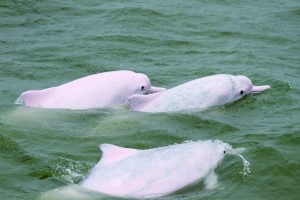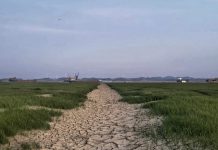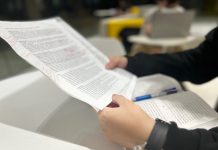Lung Mei is not the only project to face legal challenges to its EIA report. The expansion of Hong Kong International Airport (HKIA) into a three-runway system faces eight requests for a judicial review, two of them over its EIA report. The report was approved and an environmental permit issued in 2014.
The proposed third runway project involves reclaiming 650 hectares of the sea and is located in Chinese white dolphin hotspots. The Hong Kong Dolphin Conservation Society says the infrastructure will create a physical barrier in the water and disrupt dolphin activities and their movement between hotspots. Also, the pollution from the reclamation work and increased sea traffic after and during the construction will put dolphins in danger.
However, in the report, the consultancy predicts the dolphins will temporarily leave Hong Kong territorial waters during the construction and come back seven years later. It concludes that much of the environmental impact is insignificant or minor.
“We think these are assumptions without evidence and they are irresponsible,” says Viena Mak Hei-man, a member of the society’s committee. She questions why the EPD and ACE still trust the EIA report when there are obvious threats to the dolphins.

Mak says the new land reclamation will lead to the re-routing of SkyPier high-speed ferry services, a new route connecting the airport to the Mainland and Macau, posing a fatal threat to the dolphins. While the originally proposed third runway is less than 1 km away from the Sha Chau and Lung Kwu Chau Marine Park, the new route will run along the edges of the park. Although the EIA report suggests limiting sailing speed, conservationists say the vessels could still hit and cut the dolphins.
Other potential victims of the third runway are residents of Ma Wan, an island located between Lantau and Tsing Yi. Currently, aircraft leaving Hong Kong fly to the south of Ma Wan after take-off and residents there fear noise pollution will worsen once the third runway operates since there will be 102 flights per hour, compared to the current 68.
Roy Tam Hoi-pong, Tsuen Wan district councillor for the Ma Wan constituency and chief executive of Green Sense did a 20-minute observation of noise exposure last year. Nine aeroplanes passed and he recorded decibel levels above 80 – loud enough to wake a soundly sleeping person – as they flew near the island.
However, the EIA report’s Noise Exposure Forecast predicts noise produced by the increased air traffic will not affect Ma Wan. The forecast was based on two assumptions – that airlines will use quieter aircraft types and that the Civic Aircraft Department will restrict aircraft noise impact.
“It is ‘environmental impact prediction’ instead of ‘environmental impact assessment’,” says Tam. “They [the consulting firm] tried to add other parameters until the model shows that the noise will not affect Ma Wan.”
Tam and the residents participated in the public consultation and campaigned for the environmental permit to be withdrawn, but he thinks it is difficult for ordinary people to absorb information and express their concerns through the EIA procedure.
For starters, the full EIA report is only available in English and is full of jargon. The EPD only offers a Chinese version of the Executive Summaries which is published months before the official report is completed. Also, the public may not have sufficient time to comprehend the 1,227-page-long report and give reasonable advice during the 15-day public inspection period of the project profile and 30 day consultation period on the report.
Secondly, there is a problem with potential conflicts of interest. Tam questions the independence of the consultancies who conduct assessment reports since they are directly hired by the project proponent.









































